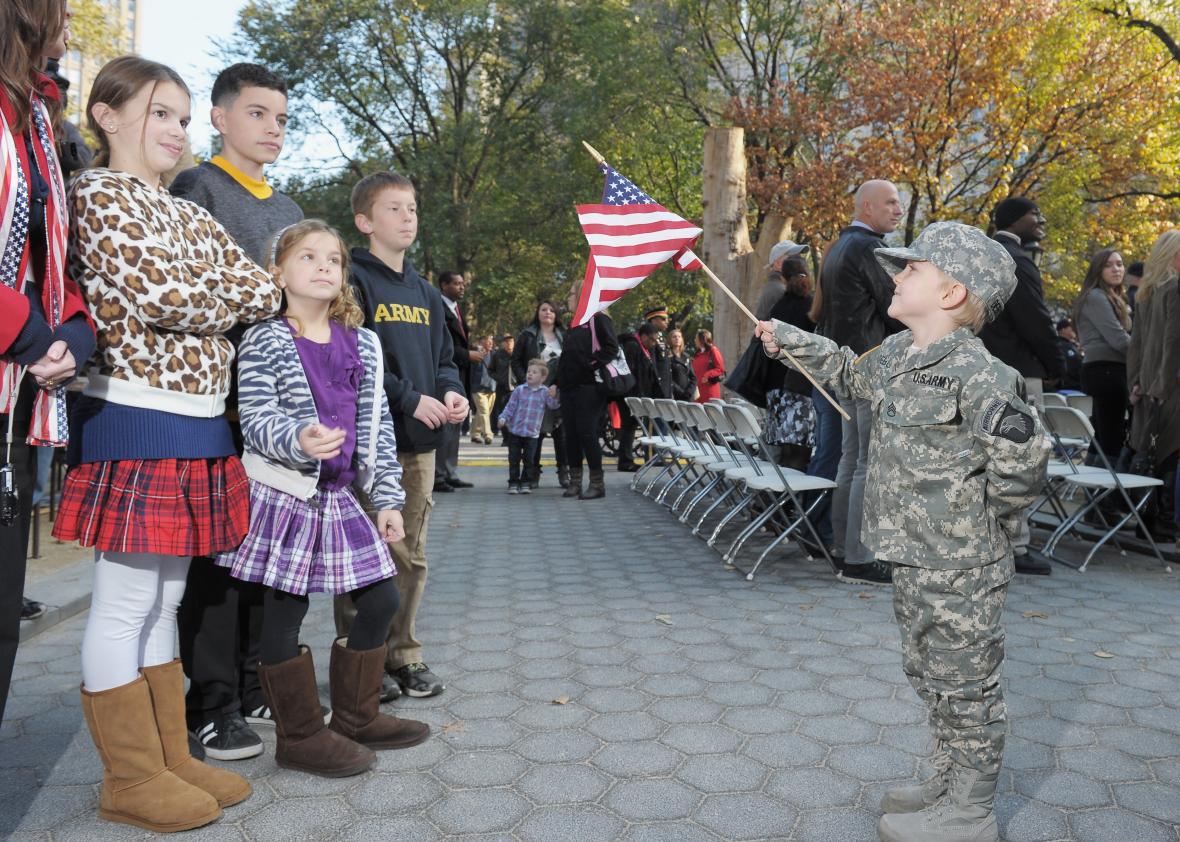The families of 17 American soldiers slain in action delivered a letter to Donald Trump on Monday demanding that the Republican nominee for president apologize for his comments about gold star parents—and Democratic National Convention guests—Khizr and Ghazala Khan. If you somehow missed this utterly insane and depressing story, Trump blew his chance to react with grace to the Muslim lawyer’s poignant tribute to his son Humayun, an Army captain who died in Iraq protecting his base from a truck filled with explosives. Smarting from Khan’s accusation that he had “sacrificed nothing and no one,” Trump first insinuated that Ghazala Khan, standing on stage beside her husband in a clear show of support, didn’t speak because, as a Muslim woman, she wasn’t allowed to have an opinion. (She later clarified that her silence flowed from sorrow.) Then he compared the vicissitudes of his own career—decades of catered boardroom meetings, luxurious galas, fancy flights—to the sacrifice endured by military families who’ve lost their loved ones.
In the letter, the gold star families, led by Karen Meredith of VoteVets.org, called Trump’s remarks “repugnant and personally offensive.” Veterans of Foreign Wars also issued a statement Monday, saying, “to ridicule a Gold Star Mother is out-of-bounds. … Election year or not, the VFW will not tolerate anyone berating a Gold Star family member for exercising his or her right of speech or expression.” And as the controversy has grown, the phrases “gold star mother” and “gold star family” have erupted on social media.
But how did gold stars come to represent grieving military families? (And has Trump ever met a sidereal symbol he couldn’t turn into a controversy about his own bigotry and political incompetence?)
Many of us are more familiar with the sarcastic use of “gold star”—as in, “Millennials want a gold star for every kabocha squash they compost.” And yet the origins of the military gold star reach back to the service flag, a banner first flown during World War I by households that had sent loved ones to fight. The simple white pennant, bordered in red, glowed with a deep blue star for every living soldier, and a gilt one for each soldier who had died. In May 1918, President Wilson approved a motion put forth by the Women’s Committee of the Council of National Defenses proposing that U.S. mothers, sisters, and daughters wear a black band with a gold star on their left arms in lieu of traditional mourning garb. In 1928, the bereaved mom Grace Darling Seibold, a D.C. native, founded a national organization she called American Gold Star Mothers to help support military families and provide care for returning veterans.
The United States entered fresh conflicts, and the gold star continued to blaze as a badge of mingled pride and grief. President Roosevelt declared the last Sunday in September “Gold Star Mothers Day” in 1936. World War II brought the gold star wives and an official gold star lapel button. In the ’60s, activist Eleanor Boyd even created the Gold Star Manor in Long Beach, California, a 348-unit retirement home for parents of fallen military men and women.
In 2005, the emblem sneaked into the heraldry of antiwar activism with the creation of the Gold Star Families for Peace, an organization founded by Cindy and Patrick Sheehan and devoted to ending the occupation of Iraq. But perhaps one of the most interesting recent twists for the gold star—at least in the context of this election—has been its evolving relationship to family members that are not U.S. citizens.
American Gold Star Mothers restricted enrollment to those born or naturalized in the United States for the first 77 years of its existence. In 2005, it rejected the application of Ligaya Lagman, a Filipino woman who paid taxes and lived in New York; her son, Anthony, had died in Afghanistan on a mission to rout the last few fighters from a Taliban campsite. The outcry against the decision—and particularly against a cavalier quote from national president Ann Herd, who said “There’s nothing we can do. … We can’t go changing the rules every time the wind blows”—attracted the attention of politicians, including a certain female senator. “We now have many noncitizens serving honorably in our armed services,” Hillary Clinton scolded the mothers at the time.
Several months later, Gold Star Mothers accepted its first noncitizen: the Jamaican-born Carmen Palmer, whose 22-year-old son was killed in Iraq in 2003. And now a coalition of gold star families are speaking up on behalf of the Khans—American citizens, of course, but also Muslims more likely to be targeted by all-too-familiar waves of racism and prejudice.
With every advance like this, the always-honorable gold star shines brighter.
